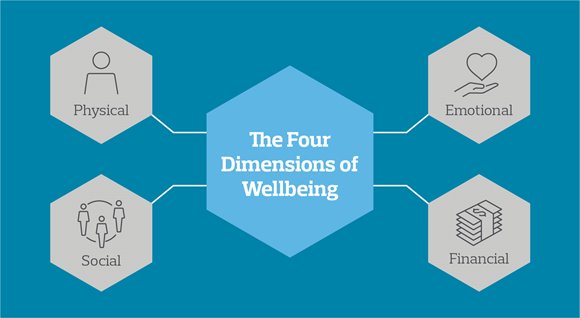7 Actionable Steps to Prioritize Your Employees’ Mental Health
- July 12, 2021
- Humantelligence

“Prioritizing happiness at work is a crucial part of finding balance in life. Those who understand this can move through it with grace. Those who don’t are bound to fall.”
— Meghan M. Biro, Founder & CEO, TalentCulture World of Work Community
According to the 2021 Future of Benefits Study, 80 percent of employers said their company culture has been more accepting of mental health challenges in the past year, but only 59 percent of workers agree with that assertion.
Seventy-nine percent of employers said they have an open and inclusive environment that encourages a dialogue about mental health, but only 52 percent of workers share that sentiment. Furthermore, 77 percent of employers said leadership at their company encourages conversations about mental health, but only 56 percent of workers agreed with that assertion.
What’s more, 78 percent of employers said workers have flexibility in their schedule to get the mental health help they need, but only 58 percent of employees said that flexibility existed.
Putting aside this disconnect for now, survey findings published May 13 by outsourcing firm Alight Solutions and the Business Group on Health showed that only 40 percent of employees held a positive view of their overall well-being — a slight increase from 39 percent in July 2020 but a decline from the 49 percent recorded last year prior to the COVID-19 pandemic.
The report further indicates that the decline in well-being levels was disproportionately higher for members of Generation Z and people of color. Employee experience scores also continued a downward trend going back to early 2020; however, respondents who reported a “great” employee experience were more than three times as likely to report having a positive view of their overall well-being. And although 61 percent of employees said they felt in control of their health, only 38 percent were positive about their physical well-being.
These stats are not surprising. While employee mental health has been a growing concern in recent years, COVID-19 certainly caused a surge in awareness. Mental health conditions that already existed before have been exacerbated, with four in 10 adults reporting anxiety or depression since the start of the pandemic. This surge has been a contributing factor to employee unhappiness, and has inspired a call for more mental health offerings for employees across organizations.
It’s up to employers to assess the needs of their workforce and experiment with fresh ways to help them achieve their well-being priorities. Early on in the pandemic, many organizations were forced to transition wellness programs to an online, remote-work environment. Fitness class offerings and doctor’s office visits moved to virtual formats, where possible, and employer and benefits messaging shifted to encouraging workers to care for their physical, mental and emotional health. Some employers also leaned heavily on employee assistance programs to provide access to key wellness resources during the pandemic.
Due in part to changes in lifestyle, people have found that they prefer to work remotely, as reports continue to show people quitting their jobs because their current employers won’t offer remote or hybrid options in a post-pandemic world — arrangements with the kind of flexibility that allow for better mental healthcare.
In fact, in Prudential’s recent Pulse of the American Worker survey of over 2,000 full-time workers, 68 percent of workers said they prefer a hybrid-work model, and the vast majority — 87 percent — said they want to continue to work remotely at least one day per week.
And though we all probably knew this before, the pandemic has really driven home the point. Feeling happy and content at work is crucial to feeling happiness in life. It would benefit all of us to continue to find ways to help coworkers, employees, and leaders feel good. To start closing the disconnect between what employers say and what employees experience, here are seven ways to support the mental health of your employees right now.
1. Survey your own employees about mental health in the workplace.
Many companies implement stress management programs — and that’s a good start. But reach out to employees about what stresses they are managing while at work. When you start to see patterns, you’ll be able to better gauge the energy and dynamic of your team and identify interventions that can have a collective positive impact. See how we take our weekly temperature here at Humantelligence with a Mood Meter…
2. Help employees reduce — not just manage — stress.
Once you’ve evaluated the main stressors of your population, make it a priority to address mental health at work. Consider implementing flexible hours or permanently hybrid or virtual work arrangements to help people juggle work and life. If resources are an issue, staff up, contract out, add budget, reprioritize, and put some projects on hold — because nothing is more important than the health and well-being of your employees.
3. Take care of your employees by watching their hours.
While burning the midnight oil seems noble and can get results in the short term, the long-term result is burnout. People need to rest, recharge and connect with loved ones to stay mentally sound, so make sure long hours aren’t a regular occurrence.
4. Make time for fun and empower meaningful connection.
Whether it’s playing a game or just connecting over chat, having fun with coworkers increases productivity and builds trust. It also relieves stress by forcing a cognitive shift in how stressors are viewed and creates a positive emotional response.
When it comes to work, we can also do better to enable more meaningful connection. Whether working one-on-one or within and across departments or divisions, teams can have a deeper understanding of one another, and as a result, work together more effectively than ever before.
To do this easily and quickly, some organizations are leveraging emotional intelligence (EQ) data to empower more inclusive communication and effective collaboration — infusing actionable emotional intelligence data into the daily workflow of all teams, at just the right moments — within chat, email, and calendar meetings. Using a plug-in that integrates with Slack, Gmail, Facebook Workplace, Microsoft Outlook & Teams, and more, users have access to in-line communication profiles for all email recipients or meeting participants — including communication recommendations and actionable insights around influencing, motivating, and collaborating.
5. Keep an eye out for depression.
According to the Partnership for Workplace Mental Health, 70 percent of people with depression are in the workforce — and not all of them are aware of their condition. Nevertheless, only 15 percent of employers train managers on how to recognize depression and intervene to help with employee care. Considering that treating depression can save companies $2,000 annually per employee through improved health and productivity, learning to take care of your employees is well worth it — not just from a cost perspective, but to help employees stay healthy and happy.
6. Provide support and employee care.
Make sure your company provides adequate benefit coverage for mental health services — from individual and couples counseling to group therapy. Offer an Employee Assistance Program (EAP) that provides access to qualified mental health therapists and a variety of services to help employees manage their lives. If you cannot implement an EAP, consider compiling a resource center of apps and services for your employees to use.
7. Tie it all together.
Consider implementing a written mental health philosophy and policy for all employees. Some organizations are creating a documented mental health policy for team members, as a way to open up the conversation and show them the support they deserve to receive from their employers. Major elements of any communication policy around mental health should include:
Acknowledgment. Let the team know that it is okay to disclose (or not disclose) a mental illness at work and to ask for help.
Offerings. Provide a clear and comprehensive explanation of benefits to ensure that employees know what resources are available to them.
Accommodations. The policy should also detail how employees can ask for reasonable accommodations for a mental health condition and explains that their information will be kept confidential.
Poor mental health and stress can negatively affect employee job performance, engagement, and communication. When thinking about a broader mental health strategy, leaders need to think comprehensively about how mental health can be supported throughout the organization — because focusing on it is critical to both your employees well-being and overall organizational effectiveness.
